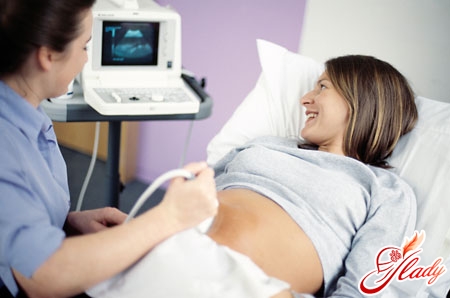 The birth of a baby is the happiest momentan event in the life of any woman. The expectant mother is waiting for it, preparing, counting the days. But at the same time, she is desperately afraid, even if she is expecting more than one baby. And it is not surprising, because childbirth is accompanied by quite painful sensations. However, there are many different ways to relieve this pain. In particular, proper breathing during childbirth and contractions plays an important role. Numerous experiences of women reliably confirm the fact that breathing can both worsen a woman's condition and significantly alleviate it and reduce the intensity of pain. Many have heard about proper breathing during childbirth. But, unfortunately, not all women consider it necessary to familiarize themselves with the existing techniques. And it is in vain - they will really be very useful to you during childbirth. To begin with, let's find out what this very correct breathing is. The official definition is as follows - controlled breathing, determined by the correctly selected depth of inhalation and its frequency. The frequency and depth of breathing directly depend on the individual characteristics of the labor process, the period of the labor process, and the oxygen needs of both the woman and the baby. It is difficult to say in advance which breathing techniques you may need during labor, so it is best to master all the basic ones. This will give you confidence and calm, and will also help you relax as much as possible, which is also important for the successful course of labor.
The birth of a baby is the happiest momentan event in the life of any woman. The expectant mother is waiting for it, preparing, counting the days. But at the same time, she is desperately afraid, even if she is expecting more than one baby. And it is not surprising, because childbirth is accompanied by quite painful sensations. However, there are many different ways to relieve this pain. In particular, proper breathing during childbirth and contractions plays an important role. Numerous experiences of women reliably confirm the fact that breathing can both worsen a woman's condition and significantly alleviate it and reduce the intensity of pain. Many have heard about proper breathing during childbirth. But, unfortunately, not all women consider it necessary to familiarize themselves with the existing techniques. And it is in vain - they will really be very useful to you during childbirth. To begin with, let's find out what this very correct breathing is. The official definition is as follows - controlled breathing, determined by the correctly selected depth of inhalation and its frequency. The frequency and depth of breathing directly depend on the individual characteristics of the labor process, the period of the labor process, and the oxygen needs of both the woman and the baby. It is difficult to say in advance which breathing techniques you may need during labor, so it is best to master all the basic ones. This will give you confidence and calm, and will also help you relax as much as possible, which is also important for the successful course of labor.
Types of respiratory techniques
Today there are three maintypes of breathing techniques that doctors recommend using during labor. These types include slow smooth breathing, shallow accelerated breathing, and transitional breathing. In some cases, one type is enough, and in some cases, you have to use all three in practice. In the early phase, it is best to try to breathe evenly and measuredly, as long as you can do it. When the contractions become more noticeable and painful, you can switch to a light type of breathing. Although often women are helped by a transitional type of breathing during this period. Everything depends solely on the individual characteristics of the body - you need to try all the options, choosing the best one for you. Smooth breathing should be used already during extremely intense contractions, when it is almost impossible to talk or walk. Some people ask how to inhale correctly - with the stomach or chest? Doctors say that this is not at all important - the main thing is that breathing brings a feeling of relief to the woman. And the main goal is maximum relaxation. Slow breathing technique Let's start with the technique of slow breathing. It is necessary to “rehearse” it even before the birth. Take the most comfortable position for you and take a deep breath. Then start exhaling slowly, trying to relax as much as possible – all muscles, from the face to the fingertips. Try to fully concentrate on your sensations. And then – abstract yourself from them. This skill will be very useful to you during labor. Pay special attention to inhalation – slightly open and relax your mouth, and draw in the air with force, with a characteristic sound. It is also desirable to exhale through the mouth, but if this is difficult for you – exhale through the mouth, the main thing is completely. After this, try to hold your breath for a few seconds – there should be no more than 8 – 10 respiratory breaths per minute. Pay attention to the condition of the muscles. During this type of breathing, the shoulders should be lowered and completely relaxed. Then relax the muscles of the shoulders and abdomen. To make it easier to do this, imagine that you are standing under a warm shower. Can you imagine it? So, you need to relax your muscles in the same order as water would wash your body – from top to bottom. As a rule, after three to four minutes you may start yawning. This is absolutely normal and should not be frightening. This exercise should be repeated until you learn to completely relax – during labor, this skill should be brought to automaticity. Try this breathing technique in all positions – sitting, lying, standing, in the car, because you cannot say for sure what position you will be in during contractions. Practice relaxing all the muscles that are not involved in supporting the body in various positions. Of course, this will take a lot of time, but during labor, you will repeatedly praise yourself for this foresight. Light, shallow, accelerated breathing AfterWhen the slow breathing technique stops helping and the contractions become more intense, you can move on to the next technique – shallow accelerated breathing. It is quite easy to master – you need to inhale and exhale through your nose, quickly enough – about once per second. Breathing should be extremely shallow – many doctors jokingly call it “dog breathing”. Inhalation should be shallow, but exhalation should be noisy, even with a slight groan during contractions. As soon as a contraction begins, immediately start breathing correctly. And do not forget that with this breathing technique, you need to try to relax as much as possible when exhaling – tension greatly increases pain. Both physical and mental tension. You need to start training in advance – first, learn to control the rhythm of your breathing. First, learn to breathe evenly, and then learn to speed up your breathing to the maximum limit. In addition, control the depth of your breathing – you need to be able to make it as shallow as possible. Start with an average breathing rate, speeding it up as the intensity of the contraction increases. The maximum tempo should be at the peak of the contraction. It is necessary to reduce its tempo gradually, as the contraction recedes. And do not forget about the accompanying relaxation of all muscles without exception - this will increase the effectiveness of the shallow accelerated breathing technique many times over. This technique also requires preliminary preparation, but be careful. Out of habit, you may start to feel dizzy - so start practicing in a sitting or lying position. And it is desirable that someone is nearby. Do not worry - after two or three sessions, your body will get used to it and stop reacting in this way. Combined breathing technique You can move on to learning this breathing technique only after you have ideally mastered both types of breathing described above. It is both types - both shallow and deep. This technique begins with deep breathing movements, which, as the contraction increases, should be replaced by light shallow breathing. Take a comfortable position for you and try to "breathe" the entire cycle. Take three deep breaths in and out, relaxing all the muscles of your body as much as possible. After that, gradually speed up your breathing, making it as shallow as possible. Breathe like this for 30-40 seconds, then switch to deeper and slower breathing again. Learn to concentrate your attention on some object. You can also learn this quite quickly - fix your gaze on some object: on a watch, on a cup, on your partner's face. After that, try to imagine some pleasant picture - a forest, the sea or your favorite cafe. Most likely, very soon you will begin to relax quite quickly and without much effort.
Light, shallow, accelerated breathing AfterWhen the slow breathing technique stops helping and the contractions become more intense, you can move on to the next technique – shallow accelerated breathing. It is quite easy to master – you need to inhale and exhale through your nose, quickly enough – about once per second. Breathing should be extremely shallow – many doctors jokingly call it “dog breathing”. Inhalation should be shallow, but exhalation should be noisy, even with a slight groan during contractions. As soon as a contraction begins, immediately start breathing correctly. And do not forget that with this breathing technique, you need to try to relax as much as possible when exhaling – tension greatly increases pain. Both physical and mental tension. You need to start training in advance – first, learn to control the rhythm of your breathing. First, learn to breathe evenly, and then learn to speed up your breathing to the maximum limit. In addition, control the depth of your breathing – you need to be able to make it as shallow as possible. Start with an average breathing rate, speeding it up as the intensity of the contraction increases. The maximum tempo should be at the peak of the contraction. It is necessary to reduce its tempo gradually, as the contraction recedes. And do not forget about the accompanying relaxation of all muscles without exception - this will increase the effectiveness of the shallow accelerated breathing technique many times over. This technique also requires preliminary preparation, but be careful. Out of habit, you may start to feel dizzy - so start practicing in a sitting or lying position. And it is desirable that someone is nearby. Do not worry - after two or three sessions, your body will get used to it and stop reacting in this way. Combined breathing technique You can move on to learning this breathing technique only after you have ideally mastered both types of breathing described above. It is both types - both shallow and deep. This technique begins with deep breathing movements, which, as the contraction increases, should be replaced by light shallow breathing. Take a comfortable position for you and try to "breathe" the entire cycle. Take three deep breaths in and out, relaxing all the muscles of your body as much as possible. After that, gradually speed up your breathing, making it as shallow as possible. Breathe like this for 30-40 seconds, then switch to deeper and slower breathing again. Learn to concentrate your attention on some object. You can also learn this quite quickly - fix your gaze on some object: on a watch, on a cup, on your partner's face. After that, try to imagine some pleasant picture - a forest, the sea or your favorite cafe. Most likely, very soon you will begin to relax quite quickly and without much effort.
general information
Be sure to start your workout approximately 3 hours beforemonths before the expected date of delivery, because they can start prematurely. Set aside at least 20 minutes a day for these exercises. You can do them at any time convenient for you, because the birth will also not be on schedule. Moreover, if you do gymnastics for pregnant women, it is better to do breathing exercises at the end of the classes. Pay attention to the duration of these classes. More precisely, to the end result. In some cases, a contraction can last for a very long time - up to 4-5 minutes. And what does this mean? That's right, you should be able to hold your breath and concentrate your breathing for at least 5 minutes. If you can do this for a longer time, this is only your advantage.
Breathing during attempts
It is worth talking separately about breathing duringpushing. It is no less important than breathing during contractions. Moreover, proper breathing reduces the pushing period by 50% and protects the perineum from ruptures. So, let's look at these breathing techniques step by step: The first method
The more carefully you adhere toof such a technique, the faster the baby will move along the birth canal. Do not forget about the need to relax as much as possible between pushing. The second method This method is no less effective than the first. It is especially ideal for those women who have a high risk of perineal rupture. As a rule, it is difficult to predict this in advance, so it is worth mastering both methods.
We sincerely wish you an easy birth, so that you remember your baby's birthday only with joy, and not with a slight shudder. And breathing during labor will help you! We recommend reading:









